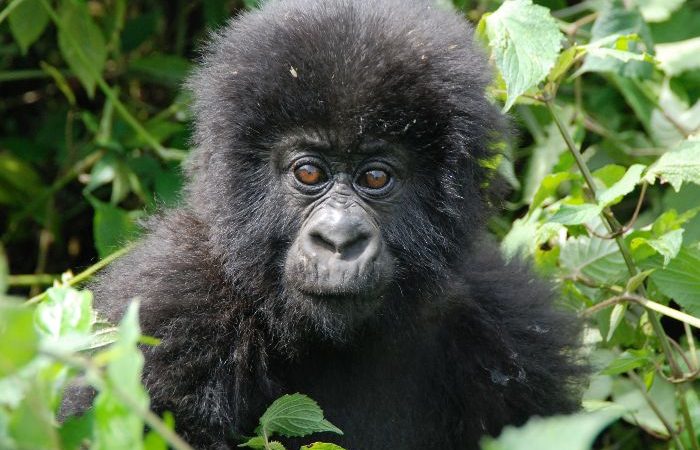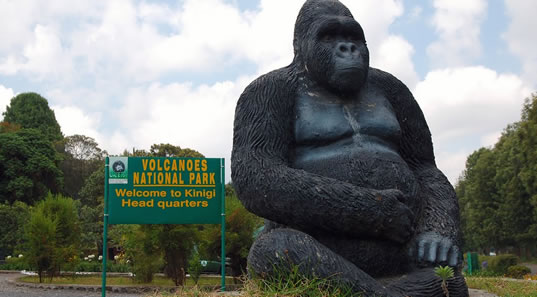
Gorilla trekking rules and regulations
Gorilla trekking rules and regulations are the various guidelines set out by the responsible governing bodies of tourism in the three respective countries where gorilla trekking takes place, that is the Uganda Wildlife Authority (UWA)governing both Mgahinga Gorilla National park and Bwindi Impenetrable National Park, the Rwanda Development Board (RDB) governing Volcanoes National Park, and the Congolese Institute for nature Conservation (ICCN), all playing a very critical role in the conservation and protection of the endangered mountain gorilla as well as other gorilla species especially in Virunga National Park.
Mountain gorillas not long ago were listed as critically endangered and on the verge of extinction, but with the combined government and conservationists’ help, mountain gorilla population has been increasing that they are now only listed as endangered. There us so much being done to protect and conserve the mountain gorillas, among them a number of gorilla trekking rules and regulations put in place to protect and conserve the wild game and their habitat, but also protect the travelers who visit Rwanda, visit the Democratic Republic of Congo and Explore Uganda especially for gorilla trekking safaris. Below are some of the gorilla trekking rules that are expected to be adhered to at all times;
On The Way to See the Gorillas:
- Only persons above the age of 15 years can be allowed to embark on gorilla trekking. Children below 15 years are not allowed because they most a times have child-hood illnesses which the gorillas would easily catch as gorillas are very susceptible to human diseases.
- A maximum of 8persons per gorilla group are allowed to visit a gorilla family/group at a time. This is in place to minimise behavioural disturbances to the gorilla and the risk of their exposure to human illnesses.

- Always wash your hands before you embark on starting your gorilla trek.
- When you start the trek and do see the gorillas, the guides shall indicate you to their direction and take you there, do not do anything that you have not been instructed to by your guide or park rangers.
- Always maintain low voices in the park, for a chance to observe so much more including bird life.
- Do not litter the park; carry all your rubbish back with you, including food wraps.
When You Are With the Gorillas
- Do not leave your group at any time once in the presence of the gorillas. Do not scatter and also do not surround the gorillas as this threatens them.
- Always maintain a safe distance of 7 meters away from the gorillas. This is to protect the gorillas from catching any communicable illnesses. Should inquisitive and curious infants or juveniles come close to you, do not touch them and follow your ranger’s instructions.
- Do not eat or drink anywhere near the gorillas. Eating and drinking should be done at the very least 200 meters away from the gorillas.
- Should the gorillas charge at you, do not panic. Instead follow all the instructions that your guide and rangers shall be giving you, say crouching down slowly with eyes down-cast. Do not run away as the gorillas will out-run you. Do not look into the eyes of the gorillas.
- Do not touch the gorillas.
- Do not use flash photography while taking pictures or videos of the gorillas.
- Spend only up to 1 hour with the gorillas.
General Gorilla Trekking Rules in Regards to Health
- Should you wake up ill on that day of gorilla trekking with contagious illness that the gorillas are susceptible to, volunteer to stay behind. An alternate visit shall be arranged for you should your schedule allow or be refunded your gorilla trekking permit price.
- Should you feel the urge to cough or sneeze while with the gorillas, kindly turn your head away from the gorillas and cover your nose and mouth while at it, in order to minimise the spread of bacteria or viruses.
- Should you need to use the toilet while gorilla trekking, ask one of the guides to help you dig up a hole of reasonable size and be sure to properly cover it after use. This is to minimise the risk of disease transmission should the gorillas come into contact.
The above are the various gorilla trekking rules that travelers are expected to follow to the dot, while gorilla trekking in Rwanda, Uganda or the Congo. Play your conservation ended role by following the above gorilla trekking rules that future generations can also still get to enjoy all that you are now.


